Home>Storage Ideas>Bathroom Storage>I’ve Redesigned 14 Bathrooms: These Are The Lessons Learned
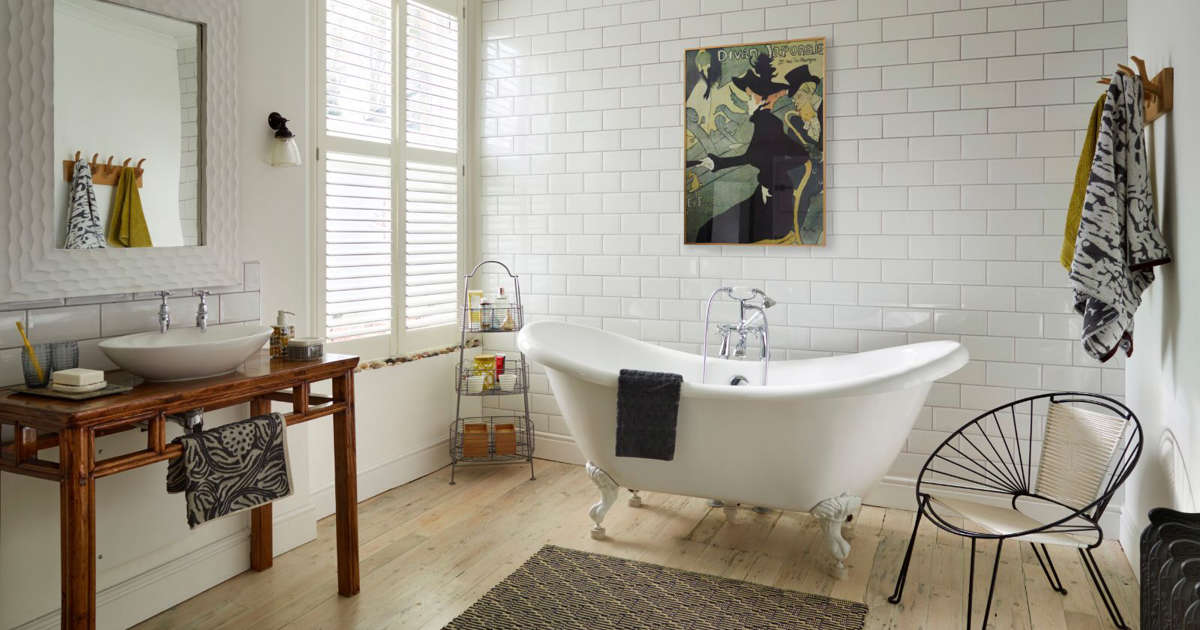

Bathroom Storage
I’ve Redesigned 14 Bathrooms: These Are The Lessons Learned
Modified: August 30, 2024
Discover the top lessons learned from redesigning 14 bathrooms, with a focus on maximizing bathroom storage. Transform your space with these valuable insights.
(Many of the links in this article redirect to a specific reviewed product. Your purchase of these products through affiliate links helps to generate commission for Storables.com, at no extra cost. Learn more)
Introduction
When it comes to designing or renovating a bathroom, storage is often an overlooked aspect. However, having adequate storage in your bathroom is essential for maintaining a clean and organized space. From towels and toiletries to cleaning supplies and beauty products, a well-designed bathroom storage solution can make a significant difference in your daily routine.
Having worked as a bathroom designer for several years, I have had the opportunity to redesign numerous bathrooms and gain valuable insights into the world of bathroom storage. In this article, I will be sharing my top lessons learned from these experiences, helping you create a functional and stylish bathroom storage solution that meets your needs.
From space planning to material selection, lighting options to ventilation considerations, I’ll cover a wide range of aspects that contribute to effective bathroom storage. So, whether you’re starting from scratch with a bathroom remodel or looking to optimize your existing storage space, these lessons will guide you in making informed decisions.
Throughout this article, I’ll be diving deep into the world of bathroom storage, providing practical tips and techniques to maximize functionality and style. So without further ado, let’s jump right in and explore the secrets to effective bathroom storage!
Key Takeaways:
- Lesson 1: Efficient bathroom storage starts with space planning. Measure your space, consider your storage needs, and utilize vertical space to create a functional and visually appealing storage solution.
- Lesson 2: Balancing functionality and aesthetics is key. Choose durable, moisture-resistant materials and hardware that complements your bathroom’s design while prioritizing practicality.
Lesson 1: Understanding the Importance of Space Planning
When it comes to bathroom storage, space planning is crucial. Before diving into the design process, it’s essential to carefully analyze the available space and assess your storage needs. Understanding how much space you have to work with will help you determine the types of storage solutions that will fit and how to optimize the layout for easy access and functionality.
Start by measuring the dimensions of your bathroom and noting any architectural features or obstacles, such as windows, doors, or plumbing fixtures. This will allow you to identify the areas where storage can be incorporated without compromising the overall flow and functionality of the space.
Consider the items you need to store in your bathroom. Are you looking to store towels, toiletries, cleaning supplies, or a combination of these? This will help you determine the types and sizes of storage solutions that will best accommodate your needs.
Based on the available space and your storage requirements, you can choose from a variety of storage options, such as vanity cabinets, open shelves, wall-mounted cabinets, or built-in niches. Each option has its pros and cons, so it’s important to consider factors like accessibility, aesthetics, and maintenance when making your selection.
Another aspect of space planning is ensuring that there is enough clearance around your storage solutions. Be mindful of door swings, movement pathways, and the proximity of fixtures like toilets and showers to avoid any hindrance in your daily activities.
Incorporating space-saving techniques is also crucial, especially in smaller bathrooms. Utilize vertical space by installing tall cabinets or shelving units to maximize storage capacity without taking up much floor space. Consider recessed storage options, such as recessed medicine cabinets or recessed shelves, to save space and maintain a seamless look.
Lastly, don’t forget to leave room for future expansion or additional storage needs. It’s always better to have a little extra space rather than cramming everything into a tight area.
By understanding the importance of space planning, you can create a bathroom storage solution that is both functional and visually appealing. Taking the time to assess your space and storage requirements will ensure that you make the most of the available area while keeping your bathroom organized and clutter-free.
Lesson 2: Selecting the Right Fixtures and Materials
When it comes to bathroom storage, selecting the right fixtures and materials is essential for both functionality and durability. The choices you make in this regard can greatly impact the overall usability and aesthetic appeal of your bathroom storage solutions.
Start by considering the type of fixtures you need. For example, if you are looking for a vanity cabinet, consider the size, style, and storage options it offers. Opt for a vanity that provides ample drawer and cabinet space, as well as adjustable shelves to accommodate different items.
In terms of materials, consider the durability and moisture resistance of the fixtures. Bathrooms are prone to high humidity and moisture, so it’s crucial to choose materials that can withstand these conditions. Look for water-resistant materials such as moisture-resistant MDF or plywood for vanity cabinets and shelving units.
When it comes to countertops, opt for materials such as quartz or solid surfaces that are resistant to stains and moisture. These materials are easy to clean and maintain, ensuring that your bathroom storage surfaces stay looking their best.
For shelving and storage accessories, consider materials that are resistant to water damage, such as stainless steel or coated wire. These materials not only withstand moisture but also offer a sleek and modern aesthetic to your bathroom storage solutions.
Consider the finish options available for fixtures and materials, and choose one that both complements your overall bathroom design and is easy to clean. Matte finishes are gaining popularity due to their resistance to fingerprints and water spots, making them a practical choice for bathroom storage solutions.
Additionally, pay attention to the hardware and accessories you choose for your bathroom storage. Handles, knobs, and drawer pulls play a significant role in both the functionality and style of your storage units. Opt for hardware that is easy to grip and use, while also adding a touch of personality to your bathroom design.
Different fixtures and materials offer different storage solutions. Consider incorporating a combination of closed cabinets, open shelves, and drawers to create a versatile and efficient storage system. This will allow you to accommodate various items and keep your bathroom organized.
By carefully selecting the right fixtures and materials for your bathroom storage, you can create a functional and visually appealing space. Pay attention to durability, moisture resistance, and finish options, ensuring that your storage solutions not only look great but also stand the test of time.
Lesson 3: Incorporating Ample Storage Solutions
One of the key aspects of effective bathroom storage is ensuring that you have ample storage solutions to accommodate all your belongings. Whether you have a small powder room or a spacious master bathroom, incorporating enough storage options is essential for a clutter-free and organized space.
Start by considering the different types of items you need to store in your bathroom. This could include towels, toiletries, cleaning supplies, hair tools, and more. By categorizing your belongings, you can determine the specific storage solutions needed for each item.
One of the most common storage solutions in a bathroom is a vanity cabinet. This provides a convenient and hidden storage area for items like toilet paper, cleaning supplies, and extra towels. Opt for a vanity with multiple drawers and shelves to keep your items neatly organized and easily accessible.
For smaller bathrooms or bathrooms without much built-in storage, consider adding wall-mounted cabinets or shelves. These can be installed above the toilet or vanity, offering additional storage without taking up valuable floor space. Open shelves can be used to display decorative items or store frequently used toiletries in stylish baskets or bins.
If you have ample vertical space, consider installing a tall linen cabinet. This can be used to store towels, extra toiletries, and other bathroom essentials. Look for options that offer adjustable shelves to accommodate different heights of items.
Don’t overlook the power of hooks and hanging organizers. These can be mounted on the back of the bathroom door or on the wall to hold towels, bathrobes, and other items that need to be easily accessible. Additionally, installing a magnetic strip on the wall can provide a convenient spot for metal objects like tweezers, nail clippers, and small grooming tools.
Another creative storage solution is utilizing the space above the bathroom door. Install a shelf or cabinet in this area to store items that are not frequently used, such as extra toiletries or cleaning supplies.
Finally, consider incorporating hidden storage options to maintain a clean and streamlined look. For example, choose a vanity with a toe kick drawer, which is a hidden storage compartment that can be used for items like cleaning products or extra bath towels.
By incorporating ample storage solutions in your bathroom, you can effectively organize your belongings and maintain a clutter-free space. Consider the specific needs of your items and maximize the use of your available vertical and wall space. With the right storage solutions in place, you can create a functional and visually appealing bathroom storage system.
Lesson 4: Prioritizing Functionality Over Aesthetics
When it comes to designing bathroom storage solutions, it’s important to prioritize functionality over aesthetics. While having a visually appealing bathroom is desirable, the primary goal of storage is to provide convenience and easy access to your belongings. By focusing on functionality, you can create a storage system that not only looks good but also serves its purpose effectively.
Consider the layout and flow of your bathroom when planning storage solutions. Optimize the placement of cabinets, shelves, and drawers to ensure that they are easily accessible and don’t obstruct any fixtures or doorways. For example, place frequently used items like towels and toiletries within arm’s reach of the shower or vanity.
Another aspect to consider is the usability of your storage solutions. While decorative baskets and bins may look appealing, they may not be the most practical choice for accessing items quickly. Instead, opt for clear or labeled containers that allow you to easily see and grab what you need without rummaging through various containers.
Think about the functionality and organization of your storage units. Incorporate dividers, trays, or adjustable shelves to keep items separated and organized. This will help prevent clutter and make it easier to find what you’re looking for. Utilize drawer organizers for small items like cosmetics or hair accessories, ensuring that everything has its designated place.
When selecting materials for your storage solutions, prioritize durability and ease of maintenance. While stylish and delicate materials may be visually appealing, they may not withstand the moisture and heavy use that comes with a bathroom environment. Choose materials that are easy to clean, water-resistant, and highly durable for long-lasting functionality.
Don’t forget to consider the weight-bearing capacity of your storage units. Ensure that your shelving or cabinets are sturdy enough to hold the items you plan to store without any risk of collapse. Reinforce shelves if needed to prevent sagging or bending over time.
Remember that functionality doesn’t mean compromising style entirely. Look for storage solutions that align with your aesthetic preferences, whether it’s a modern, minimalist, or rustic look. There are plenty of options available that combine both form and function, allowing you to create a harmonious and functional bathroom storage system.
By prioritizing functionality over aesthetics, you can create a well-designed bathroom storage system that not only looks great but also serves its purpose effectively. Consider the usability, organization, and durability of your storage solutions, ensuring that they enhance the functionality of your space and make your daily routines easier.
Read more: 7 Lessons In Modern Farmhouse Style That The Designer Of This Elegant Kitchen Wants Us To Learn
Lesson 5: Considering the Lighting Options
When designing a bathroom storage system, it’s important to consider the lighting options available. Adequate lighting plays a crucial role in creating a functional and inviting space, ensuring that you can easily find and access items in your storage solutions. Here are a few key factors to keep in mind when considering the lighting for your bathroom storage:
1. Natural Light: If possible, try to maximize the use of natural light in your bathroom. Natural light not only brightens up the space but also helps prevent moisture build-up and mold growth. Consider installing larger windows or skylights to increase the amount of natural light coming into your bathroom. This will not only benefit the overall ambiance but also make it easier to navigate and find items in your storage solutions.
2. Task Lighting: In addition to natural light, task lighting is essential for illuminating specific areas where you need extra visibility. Consider installing task lighting near storage spaces such as the vanity or medicine cabinet. This will help you see clearly when searching for specific items or applying makeup. LED strip lights are a popular choice for under-cabinet lighting, providing a bright and energy-efficient solution.
3. Ambient Lighting: To create a welcoming atmosphere and overall brightness in your bathroom, ambient lighting is key. This can be achieved through the use of ceiling-mounted fixtures, recessed lighting, or even pendant lights. It’s important to evenly distribute the ambient lighting throughout the space, ensuring that it reaches all corners, including the storage areas.
4. Accent Lighting: If you have decorative elements or specific areas of interest in your bathroom storage solutions, accent lighting can help draw attention to them. This can be accomplished with the use of spotlights, wall sconces, or LED strips. For example, if you have open shelves displaying decorative items, incorporating accent lighting above or below the shelves can create a visually appealing focal point.
5. Dimmers: Consider installing dimmer switches for your bathroom lighting. This allows you to adjust the intensity of the light according to your needs, whether you want a bright, well-lit space or a more relaxed and soothing environment. Dimmers can be particularly beneficial in bathrooms with storage units, as they offer flexibility and allow you to create the desired ambiance.
When planning your bathroom lighting, it’s crucial to ensure that it complements your storage solutions and enhances their functionality. Well-lit storage areas make it easier to locate items and keep your bathroom organized. By carefully considering the natural and artificial lighting options available, you can create a well-lit and visually appealing bathroom storage system.
Lesson 6: Understanding the Significance of Ventilation
When it comes to bathroom storage, understanding the significance of ventilation is crucial. Proper ventilation not only helps to reduce humidity and moisture but also plays a vital role in maintaining the longevity of your storage solutions. Here are a few key reasons why ventilation is essential:
1. Preventing Moisture Damage: Bathrooms are prone to high humidity levels, which can lead to moisture damage. Excess moisture can cause wooden storage units to warp, shelves to sag, and metal hardware to rust. By ensuring proper ventilation, you can minimize the risk of moisture damage and preserve the integrity of your storage solutions.
2. Minimizing Mold and Mildew: Excessive moisture in a poorly ventilated bathroom can create an environment conducive to mold and mildew growth. These fungi not only cause unpleasant odors but can also damage your storage units and pose health risks. Good ventilation helps to remove moisture from the air, reducing the likelihood of mold and mildew formation.
3. Decreasing Odors: Bathrooms can accumulate unpleasant odors, especially when stored items are not properly ventilated. With adequate ventilation, the air in your bathroom is constantly refreshed, reducing lingering odors and ensuring a more pleasant environment.
4. Extending the Lifespan of Storage Solutions: Proper ventilation helps to maintain the longevity of your bathroom storage solutions. By minimizing moisture exposure, you can prevent the deterioration of materials, such as warping or discoloration. This ensures that your storage units remain functional and visually appealing for years to come.
So, how can you ensure proper ventilation in your bathroom?
1. Exhaust Fans: Installing an exhaust fan is one of the most effective ways to improve ventilation in your bathroom. These fans help to remove stale air and moisture, replacing it with fresh outdoor air. Ensure the exhaust fan is of the appropriate size for your bathroom to adequately ventilate the space.
2. Windows: If possible, open windows to allow for natural ventilation. Fresh air circulation can help reduce moisture and odors in your bathroom. However, be mindful of privacy and safety considerations when using windows for ventilation.
3. Ventilation Ducts: Ensure that your bathroom is equipped with proper ventilation ducts that remove humid air outside your home. Regularly clean and maintain these ducts to optimize their efficiency.
4. Use of Dehumidifiers: In particularly humid climates or bathrooms with limited ventilation options, consider using a dehumidifier to remove excess moisture from the air. This can help prevent moisture-related issues and protect your storage solutions.
By understanding the significance of ventilation in your bathroom, you can create a healthier and more durable environment for your storage solutions. Implementing proper ventilation techniques ensures that your bathroom remains free from excess moisture, mold, and odors, while also preserving the functionality and aesthetics of your storage units.
Lesson 7: Creating a Cohesive Design Scheme
When designing a bathroom storage system, it’s important to create a cohesive design scheme that harmonizes with the overall aesthetic of your bathroom. By considering color palettes, materials, and design elements, you can ensure that your storage solutions seamlessly blend in with the rest of the space. Here are some key considerations for creating a cohesive design scheme:
1. Consistent Color Palette: Choose a color palette for your bathroom that complements your storage solutions. This can include the wall color, tile, and even the finishes of your storage units. Opt for a color scheme that creates a cohesive and visually appealing look throughout the space. For example, if you have a modern aesthetic, consider a monochromatic color palette with contrasting accents.
2. Material Selection: Select materials for your storage solutions that complement the other materials in your bathroom. Whether you choose wood, metal, or glass, ensure that the finishes and textures align with the overall design scheme. Consider the balance between durability, functionality, and aesthetics when making material choices for your storage units.
3. Matching Hardware: Pay attention to the hardware used on your storage units, such as drawer pulls, handles, and knobs. Choose hardware that complements the style and finish of your faucets, shower fixtures, and other bathroom accessories. This will create a cohesive and polished look throughout the space.
4. Reflective Surfaces: Incorporating reflective surfaces, such as mirrors or glass, can help enhance the cohesive design of your bathroom storage. Mirrored cabinets or shelves can create depth and visually expand the space, while glass storage containers can add a touch of elegance. Reflective surfaces also reflect light, making your bathroom appear brighter and more spacious.
5. Consider Design Themes: If you have a specific design theme or style in mind for your bathroom, ensure that your storage solutions align with that theme. Whether it’s a rustic farmhouse, sleek minimalist, or vintage-inspired design, select storage units that complement and enhance the chosen theme. This will create a cohesive and visually pleasing ambiance.
6. Balance Functionality and Aesthetics: While it’s important to create a cohesive design scheme, remember to prioritize functionality. Ensure that your storage solutions meet your practical needs and provide adequate space for your belongings. Strike a balance between functionality and aesthetics to achieve the best of both worlds.
By creating a cohesive design scheme, you can ensure that your bathroom storage solutions seamlessly blend into the overall aesthetics of your space. Consider color palettes, materials, and design elements that complement the rest of your bathroom, while also prioritizing functionality. A cohesive design scheme will enhance the overall look and functionality of your bathroom storage system.
When redesigning a bathroom, consider the layout carefully to ensure efficient use of space and easy access to essential fixtures.
Lesson 8: Making the Most of Small Bathroom Spaces
Designing storage solutions for small bathroom spaces requires creativity and efficient use of every available inch. With limited square footage, it’s essential to maximize functionality while maintaining a visually appealing and uncluttered look. Here are some strategies for making the most of small bathroom spaces:
1. Utilize Vertical Space: When floor space is limited, take advantage of vertical space by installing tall cabinets or shelving units. These provide ample storage without taking up valuable floor space. Utilize adjustable shelves to accommodate items of various heights and keep the unit organized.
2. Opt for Wall-Mounted Options: To create a sense of openness, opt for wall-mounted storage solutions. This includes wall-mounted cabinets, shelves, and hooks. These options not only free up floor space but also add an airy and modern feel to the bathroom.
3. Make Use of Nooks and Crannies: Take advantage of any nooks or awkward spaces in your small bathroom. Transform them into storage opportunities by installing floating shelves, corner cabinets, or narrow shelves. These spaces can be ideal for storing small items or decorative accents.
4. Choose Multi-Functional Furniture: To save space, consider using multi-functional furniture in your bathroom. An example is a vanity with drawers and shelves for storage. Alternatively, select a wall-mounted mirror cabinet that combines storage with a reflective surface, providing both function and style in one piece.
5. Use Doors for Storage: Don’t overlook the potential storage space behind your bathroom door. Install hooks, racks, or an over-the-door organizer to hang towels, robes, or other commonly used items. This not only keeps them off the floor but also maximizes the use of vertical space.
6. Think Outside the Box: Look for unconventional storage solutions to make the most of every inch. For example, incorporate storage in unexpected areas such as above the toilet or sink, inside recessed walls, or under the bathtub. Utilize baskets, bins, or drawer dividers to keep items organized within these spaces.
7. Keep an Organized and Minimalist approach: To avoid a cluttered look in a small bathroom, adopt an organized and minimalist approach. Regularly declutter your bathroom storage and keep only the essentials. Opt for sleek and streamlined storage units with clean lines, and minimize the use of decorative items that can add visual clutter.
8. Light Colors and Mirrors: Light-colored walls, cabinets, and storage units can create an illusion of space and make the bathroom feel larger. Mirrors also play a crucial role in small bathroom design by reflecting light and creating a sense of openness.
With thoughtful planning and strategic design choices, small bathroom spaces can be transformed into functional and stylish areas. Maximize vertical space, utilize clever storage options, and maintain an organized and minimalist approach. By making the most of every inch, you can create a small bathroom that feels spacious and welcoming.
Read more: How To Learn Plumbing
Lesson 9: Incorporating Sustainable and Eco-Friendly Elements
Designing bathroom storage solutions that are not only functional but also environmentally friendly is a great way to contribute to sustainable living. By incorporating sustainable and eco-friendly elements into your storage design, you can reduce your carbon footprint and create a healthier home environment. Here are some ways to incorporate sustainability into your bathroom storage:
1. Use Recycled or Reclaimed Materials: Opt for storage units made from recycled materials or reclaimed wood. These materials not only give your bathroom a unique and rustic look but also help reduce the demand for new resources. Look for furniture or storage solutions that have been certified as sustainably sourced.
2. Choose Low-VOC Finishes: Volatile Organic Compounds (VOCs) are chemicals found in many paints, varnishes, and finishes that can contribute to indoor air pollution. Select storage units with low or zero VOC finishes to prevent the release of harmful chemicals into your bathroom environment. This promotes better air quality and healthier living conditions.
3. Optimize Energy Efficiency: Consider incorporating energy-efficient lighting fixtures into your bathroom storage design. Choose LED lights or other energy-efficient bulbs to minimize energy consumption. Additionally, select storage units with LED lighting options, as these are long-lasting and energy-efficient.
4. Water-Saving Features: In bathrooms, water usage is a significant concern. Choose storage units with water-saving features like faucets with aerators, which reduce water flow without compromising performance. Consider installing a dual-flush toilet or a low-flow showerhead to further conserve water.
5. Sustainable Packing Materials: Look for storage units that are packaged using sustainable packing materials. Many companies now use recyclable or biodegradable packaging materials, reducing waste and the environmental impact of shipping.
6. Upcycling and Repurposing: Get creative and consider upcycling or repurposing old furniture or storage units for your bathroom. For example, an old dresser can be transformed into a unique vanity with storage space. This not only saves resources but also adds character and personalization to your bathroom storage design.
7. Water-Resistant and Eco-Friendly Paint: When painting your storage units, choose water-resistant and eco-friendly paint options. Look for paints that are low in VOCs and environmentally friendly. These paints reduce pollution and contribute to a healthier indoor environment.
8. Embrace Minimalism: One of the most sustainable approaches to bathroom storage is embracing minimalism. By decluttering and keeping only the essentials, you reduce waste and create a more organized and streamlined space. Choose storage units with clean lines and simple designs to maintain a minimalist aesthetic.
By incorporating sustainable and eco-friendly elements into your bathroom storage design, you create a space that is not only functional and stylish but also environmentally conscious. Consider recycled or reclaimed materials, low-VOC finishes, energy-efficient lighting, and water-saving features. Embrace upcycling, minimalism, and sustainable packing materials. By making these choices, you contribute to a greener and more sustainable future.
Lesson 10: Choosing the Right Color Palette
Choosing the right color palette for your bathroom storage is essential to create a cohesive and visually appealing space. The colors you select can significantly impact the overall ambiance and style of your bathroom. Here are some tips to help you choose the right color palette for your bathroom storage:
1. Consider the Overall Aesthetic: Start by considering the overall aesthetic you want to achieve in your bathroom. Are you going for a modern, minimalist look? Or perhaps a cozy and rustic vibe? Identify the design style you prefer, as this will help guide your color choices for the storage units.
2. Reflect on the Bathroom Size: Take the size of your bathroom into account when choosing colors. Lighter colors, such as white, beige, or pastels, can make a small bathroom appear larger and more open. On the other hand, darker hues can add depth and coziness to larger bathrooms. Consider the impact of colors on the perceived size of your bathroom.
3. Coordinate with Existing Elements: Look at the existing elements in your bathroom, such as wall tiles, flooring, or fixtures. Choose storage colors that harmonize with these existing elements. This creates a cohesive and unified look throughout the space. Consider the undertones and hues of these elements when selecting storage colors.
4. Create Contrast or Perfect Match: Decide if you want your storage units to blend in with the rest of the bathroom or stand out as a focal point. If you want a cohesive look, select storage colors that match or complement the existing elements. On the other hand, if you want to create contrast and make a statement, opt for colors that are different or contrasting.
5. Play with Neutrals: Neutrals like white, beige, or gray are timeless options for bathroom storage. They provide a clean and sophisticated look that can easily match any design style. Neutrals also offer versatility as they can be paired with pops of color or vibrant accents.
6. Explore Color Psychology: Consider the psychological impact of colors in your bathroom. For instance, blues and greens promote a sense of calmness and relaxation, making them ideal for creating a spa-like atmosphere. Warm colors like yellows and oranges can add energy and vibrancy to the space. Consider the mood you want to evoke in your bathroom and choose colors accordingly.
7. Test Swatches: Before committing to a specific color, it’s always a good idea to test swatches in your bathroom. Try out different shades and observe how they look in various lighting conditions. Natural and artificial lighting can affect how colors appear. Take your time to evaluate the swatches and see which color palette works best for your space.
8. Don’t Forget Practicality: Alongside aesthetics, consider the practicality of your chosen color palette. Lighter colors may require more frequent cleaning, especially in high-traffic areas like storage units. Factor in maintenance and how well the colors will hold up over time.
By considering the overall aesthetic, coordinating with existing elements, and playing with color psychology, you can choose the right color palette for your bathroom storage. Create a visually appealing and harmonious space by selecting colors that reflect your design style and evoke the desired mood in your bathroom.
Lesson 11: Addressing Accessibility and Universal Design
When designing bathroom storage solutions, it’s important to address accessibility and incorporate universal design principles. Universal design aims to make spaces accessible and functional for people of all ages and abilities. By considering accessibility, you can create storage solutions that are inclusive and practical. Here are some key considerations for addressing accessibility and universal design in your bathroom storage:
1. Optimize Reachability: Ensure that storage units are within easy reach for users of varying heights and abilities. Avoid high shelving or cabinets that may be difficult to access for individuals with mobility issues. Consider installing adjustable shelving or pull-out drawers that can be easily accessed and modified based on user needs.
2. Provide Clear Floor Space: Allow for clear floor space in front of storage units to accommodate individuals who use mobility aids such as wheelchairs or walkers. Consider incorporating open floor space under the sink or vanity to provide easy access for wheelchair users.
3. Design with Grab Bars and Handles: Include grab bars in your bathroom storage design to assist with stability and support. These can be installed near storage units or on nearby walls to provide a secure grip for individuals with limited mobility. Additionally, select storage units with easy-to-grasp handles or knobs for easy opening and closing.
4. Consider Adjustable Height: If possible, consider storage units that can be adjusted in height. This allows for customization and flexibility based on the needs and preferences of different users. Adjustable-height vanities or cabinets can accommodate individuals of various heights and abilities.
5. Implement Non-Slip Surfaces: Ensure that surfaces within storage units and surrounding areas have non-slip characteristics to prevent accidents and falls. Choose storage materials that offer textures or incorporate non-slip coatings to provide stable and secure access to items.
6. Adequate Lighting: Proper lighting is crucial for accessibility in bathroom storage. Ensure that storage areas are well-lit to enhance visibility and make it easier to locate items. Incorporate task lighting near storage units and consider motion-sensor lights for added convenience.
7. Easy-to-Read Labels and Organization: Use clear and easy-to-read labels or visual cues to assist with organization. This can help individuals quickly locate and identify items in storage units. Consider utilizing color-coded systems or large print labels for enhanced accessibility.
8. Clear Pathways: Keep pathways within the bathroom clear and unobstructed to accommodate individuals using mobility aids. Avoid clutter or furniture that may impede movement. Ensure that storage units and other bathroom fixtures are arranged in a way that promotes easy navigation.
By addressing accessibility and incorporating universal design principles, you can create bathroom storage solutions that cater to a wide range of users. Consider optimizing reachability, providing clear floor space, and incorporating grab bars. Implement non-slip surfaces, adequate lighting, and easy-to-read labels. Always strive to create a safe, functional, and inclusive space for everyone to enjoy.
Lesson 12: Dealing with Plumbing and Electrical Challenges
When designing bathroom storage solutions, it’s important to consider the plumbing and electrical challenges that may arise. Plumbing and electrical components can present obstacles when it comes to installing and positioning storage units. By addressing these challenges, you can create a functional and efficient storage system. Here are some key considerations for dealing with plumbing and electrical challenges:
1. Plan Around Existing Fixtures: Take note of the existing plumbing and electrical fixtures in your bathroom, such as sinks, toilets, showers, and outlets. These fixtures dictate the available space and may influence the placement of your storage units. Work around these fixtures to ensure that your storage solutions do not hinder access or create interference.
2. Maintain Access to Plumbing: Ensure that your storage design allows for easy access to plumbing lines and components. Leave enough space around pipes, drains, and shut-off valves to provide accessibility for maintenance and repairs. Consider incorporating removable or hinged panels to cover plumbing access points, allowing for convenient access when needed.
3. Consult with a Professional: If you’re uncertain about the plumbing or electrical layout in your bathroom, consult with a professional. A plumber or electrician can assess the existing infrastructure and provide guidance on how to work around challenges. They can also ensure that your storage design complies with the necessary codes and regulations.
4. Consider Wall-Mounted Options: Wall-mounted storage units can be a great solution for avoiding plumbing obstacles. By mounting cabinets or shelves on the wall, you can minimize interference with plumbing lines and fixtures. This also frees up valuable floor space and creates a clean and streamlined look.
5. Incorporate Recessed Storage: Recessed storage options, such as recessed medicine cabinets or niches, can help overcome plumbing and electrical challenges. These solutions utilize the space between wall studs, allowing for storage without protruding into the bathroom space. However, be mindful of potential electrical wires or plumbing pipes within the wall when installing recessed storage units.
6. Coordinate with Professionals: If you plan to relocate or modify plumbing or electrical fixtures, it’s essential to work with licensed professionals. Consult a plumber or electrician to assess the feasibility and safety of any changes. They can advise on the necessary permits, rerouting of pipes and wires, and any potential impact on your storage design.
7. Conceal Unsightly Pipes and Wires: Design your storage solutions to conceal or camouflage unsightly plumbing pipes and electrical wires. This can be achieved through the use of cabinets, panels, or strategically placed accessories. Consider using wire management solutions to organize and hide cords, creating a neater and more visually appealing storage area.
8. Ensure Proper Ventilation: If your storage design includes cabinets or shelving near or around electrical fixtures, such as outlets or light switches, ensure proper ventilation. Avoid blocking these fixtures with storage units, as it can impede proper airflow and increase the risk of heat buildup.
By understanding and addressing plumbing and electrical challenges, you can create a well-designed and functional bathroom storage system. Plan around existing fixtures, maintain plumbing access, and consult with professionals when needed. Utilize wall-mounted or recessed storage options, and conceal unsightly pipes and wires. With thoughtful planning, you can overcome these challenges and create a storage solution that seamlessly integrates with your bathroom’s infrastructure.
Read more: How To Learn Construction
Lesson 13: Balancing Privacy and Natural Light
When designing bathroom storage solutions, it’s important to find the right balance between privacy and natural light. Bathrooms are unique spaces that require both privacy for personal activities and an infusion of natural light to create a bright and inviting atmosphere. Here are some key considerations for balancing privacy and natural light in your bathroom:
1. Window Treatments: If your bathroom has windows, consider installing window treatments that provide privacy while still allowing natural light to filter through. Options such as frosted glass, blinds, or sheer curtains can offer the perfect balance. These treatments can be adjusted to provide privacy when needed, while still allowing sunlight to enter the space.
2. Consider Placement of Windows: When renovating or designing a bathroom, think about the placement of windows in relation to the storage units. Avoid positioning storage units directly in front of windows, as this can obstruct natural light and create a darker space. Instead, arrange your storage solutions in a way that allows natural light to flow freely through the room.
3. Skylights or Light Tubes: If privacy is a significant concern or your bathroom lacks windows, consider incorporating skylights or light tubes to bring in natural light. These options not only provide privacy from neighbors or passersby but also allow sunlight to fill the room, creating a bright and open atmosphere.
4. Translucent or Textured Glass: When choosing storage units with doors, consider options with translucent or textured glass. This allows light to pass through while maintaining privacy. Frosted or etched glass can be an attractive choice, providing a combination of style and functionality.
5. Utilize Glass or Mirrors: Incorporating glass shelves or mirrored surfaces in your storage design can help reflect and amplify natural light. These elements create a sense of openness and brightness in the bathroom. The reflective nature of mirrors can also provide an illusion of greater space, making a small bathroom feel more expansive.
6. Privacy Zones: Strategically plan your storage units to create designated privacy zones. For example, position cabinets or vanities to shield areas of the bathroom where privacy is most important, such as around the toilet or shower. This ensures that you have adequate privacy while maintaining an open and well-lit atmosphere in other parts of the bathroom.
7. Light Placement: When incorporating lighting fixtures into your storage design, consider their placement to enhance both privacy and natural light. Choose fixtures that direct light downward, providing illumination where it’s needed most, such as around the vanity or near storage areas. This helps avoid casting unwanted shadows and maintains privacy while still providing ample light.
8. Adjustable Lighting: Install adjustable lighting options, such as dimmer switches or layered lighting, to customize the lighting levels in your bathroom. This allows you to control the amount of natural and artificial light, creating a balance that suits your needs and preferences at different times of the day.
By finding the right balance between privacy and natural light, you can create a bathroom space that is both functional and inviting. Consider window treatments, placement of windows, and the use of translucent or textured glass. Utilize glass or mirrors to reflect light, strategically plan privacy zones, and carefully position lighting fixtures. With thoughtful design choices, you can achieve a harmonious blend of privacy and natural light in your bathroom storage solution.
Lesson 14: Budgeting and Cost Management
When it comes to designing bathroom storage solutions, effective budgeting and cost management are crucial. Careful planning and consideration of your budget will ensure that you achieve your desired storage goals while keeping expenses in check. Here are some key strategies for budgeting and cost management:
1. Define Your Priorities: Start by clearly defining your storage priorities. Determine the must-haves versus the nice-to-haves. This will help you allocate your budget to the most important aspects of your storage design, ensuring that essential functionalities are met within your financial constraints.
2. Research and Compare Prices: Take the time to research and compare prices for storage units, materials, and fixtures. Look for sales, discounts, or promotions to get the best value for your money. Consider both online and local stores in your search, as prices can vary. Don’t forget to factor in the quality and durability of the items when comparing prices.
3. Set a Realistic Budget: Determine your overall budget for the bathroom storage project. Consider not only the cost of the storage units themselves but also any additional expenses such as installation, labor, and materials. Setting a realistic budget from the beginning will help you make informed decisions and avoid overspending.
4. Explore DIY Options: If you have the skills and time, consider taking on some DIY projects for your bathroom storage. DIY can help save costs on labor and can often result in unique and customized storage solutions. However, be realistic about your abilities and make sure you have the necessary tools and knowledge for the project.
5. Mix High and Low-End Products: To stay within your budget, consider mixing high and low-end products. Splurge on key areas where quality matters the most, like durable cabinetry or fixtures, while opting for more affordable options for items like shelving or decorative accessories. This allows you to maintain a balance of cost-effectiveness without compromising on style or functionality.
6. Plan for Hidden Costs: In any remodeling project, hidden costs can arise. Anticipate these additional expenses by allocating a portion of your budget as a contingency fund. Unexpected issues, such as plumbing or electrical complications, may require additional professional assistance or repairs.
7. Get Multiple Quotes: If you’re hiring professionals for installation or other services, it’s always a good idea to get multiple quotes. This allows you to compare prices and choose the most cost-effective option. However, don’t base your decision solely on price; consider the reputation, experience, and customer reviews of the professionals as well.
8. Track Expenses and Adjust as Needed: Throughout the project, track your expenses and adjust your plans as needed to stay within your budget. Keep a record of all purchases, labor costs, and any unexpected expenses. This will help you stay accountable and make informed decisions along the way.
By effectively budgeting and managing costs, you can achieve your desired bathroom storage design while maintaining financial stability. Define priorities, research prices, set a realistic budget, and explore DIY options when applicable. Mix high and low-end products, plan for hidden costs, get multiple quotes, and track expenses. With careful planning and cost management, you can create a functional and stylish bathroom storage system without breaking the bank.
Conclusion
Designing effective and functional bathroom storage solutions requires careful consideration of various factors. From understanding the importance of space planning to selecting the right fixtures, materials, and color palettes, each lesson contributes to the creation of a cohesive and organized bathroom. Balancing privacy and natural light, considering accessibility, and managing costs are essential aspects of designing a storage system that meets your needs and reflects your personal style.
Through the lessons learned, we have explored the significance of ventilation, lighting options, and eco-friendly elements in creating a sustainable and environmentally conscious bathroom. We have also discussed the importance of balancing functionality with aesthetics, addressing plumbing and electrical challenges, and incorporating universal design principles for an inclusive space.
By applying these lessons, you can optimize your bathroom’s potential, regardless of its size or layout. Whether you are remodeling an existing bathroom or starting from scratch, the knowledge gained from these lessons will serve as a guide to help you create a functional, stylish, and organized bathroom storage solution.
Remember, the key is to find the perfect balance between practicality, visual appeal, and cost management. By prioritizing your storage needs, utilizing available space efficiently, and making informed decisions, you can achieve a bathroom storage system that enhances your daily routines, maximizes storage capacity, and elevates the overall aesthetics of your bathroom.
So, embrace your creativity and utilize these lessons to transform your bathroom into a well-designed and functional space. Whether you prefer a minimalist, modern, or rustic style, apply these principles to create a storage solution that meets your specific needs and reflects your unique taste.
With these lessons and a touch of your personal style, you can transform your bathroom into a haven of organization, functionality, and style. Enjoy the process of designing your bathroom storage system, and revel in the satisfaction of a well-planned and thoughtfully executed space.
Frequently Asked Questions about I've Redesigned 14 Bathrooms: These Are The Lessons Learned
Was this page helpful?
At Storables.com, we guarantee accurate and reliable information. Our content, validated by Expert Board Contributors, is crafted following stringent Editorial Policies. We're committed to providing you with well-researched, expert-backed insights for all your informational needs.

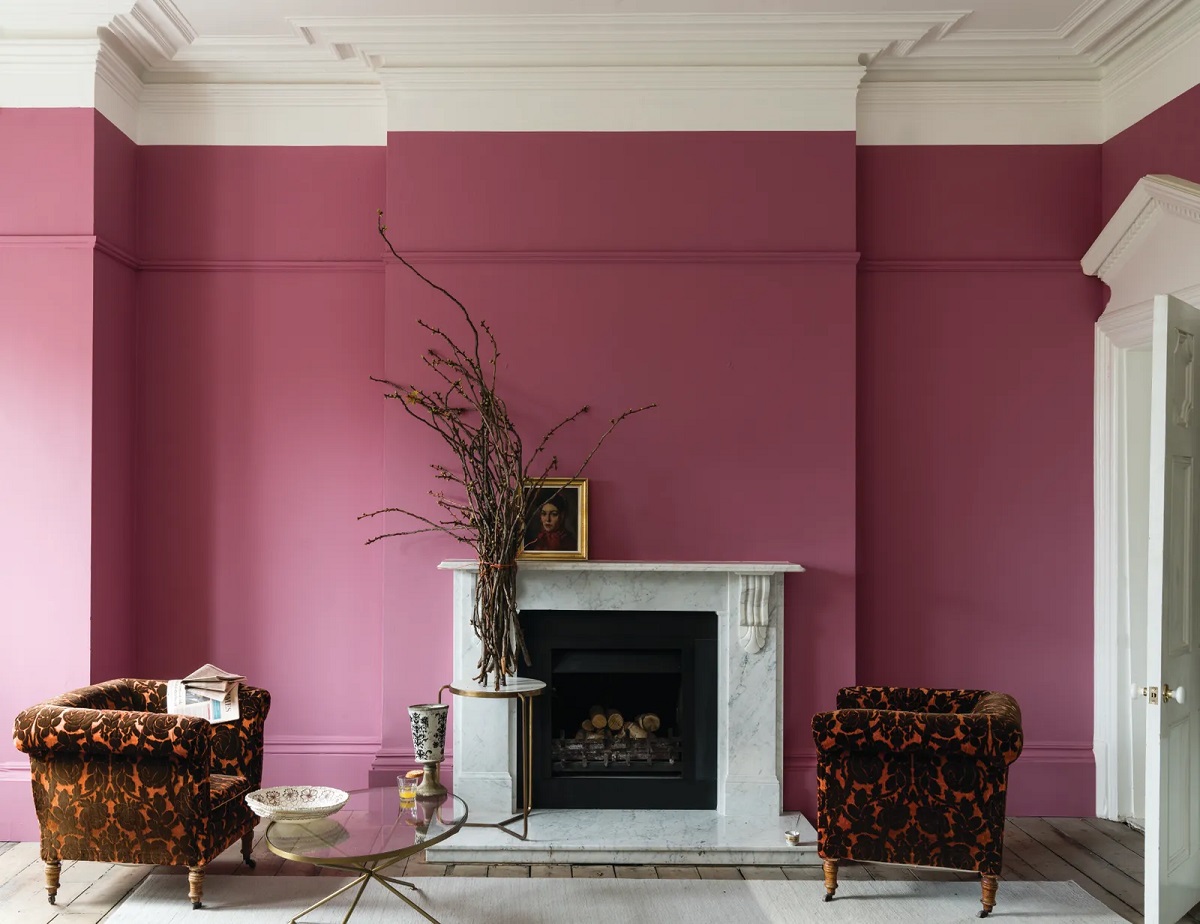



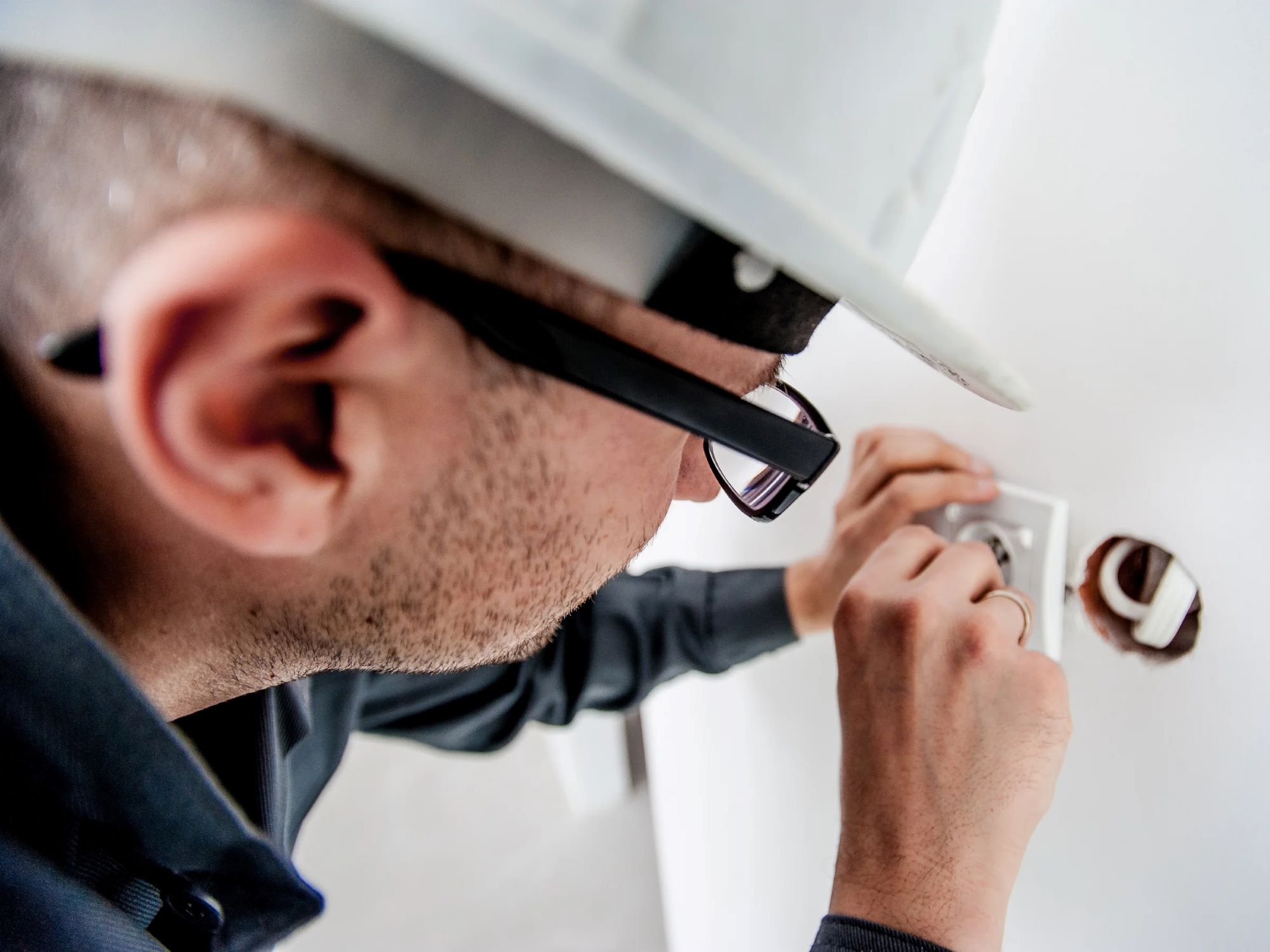
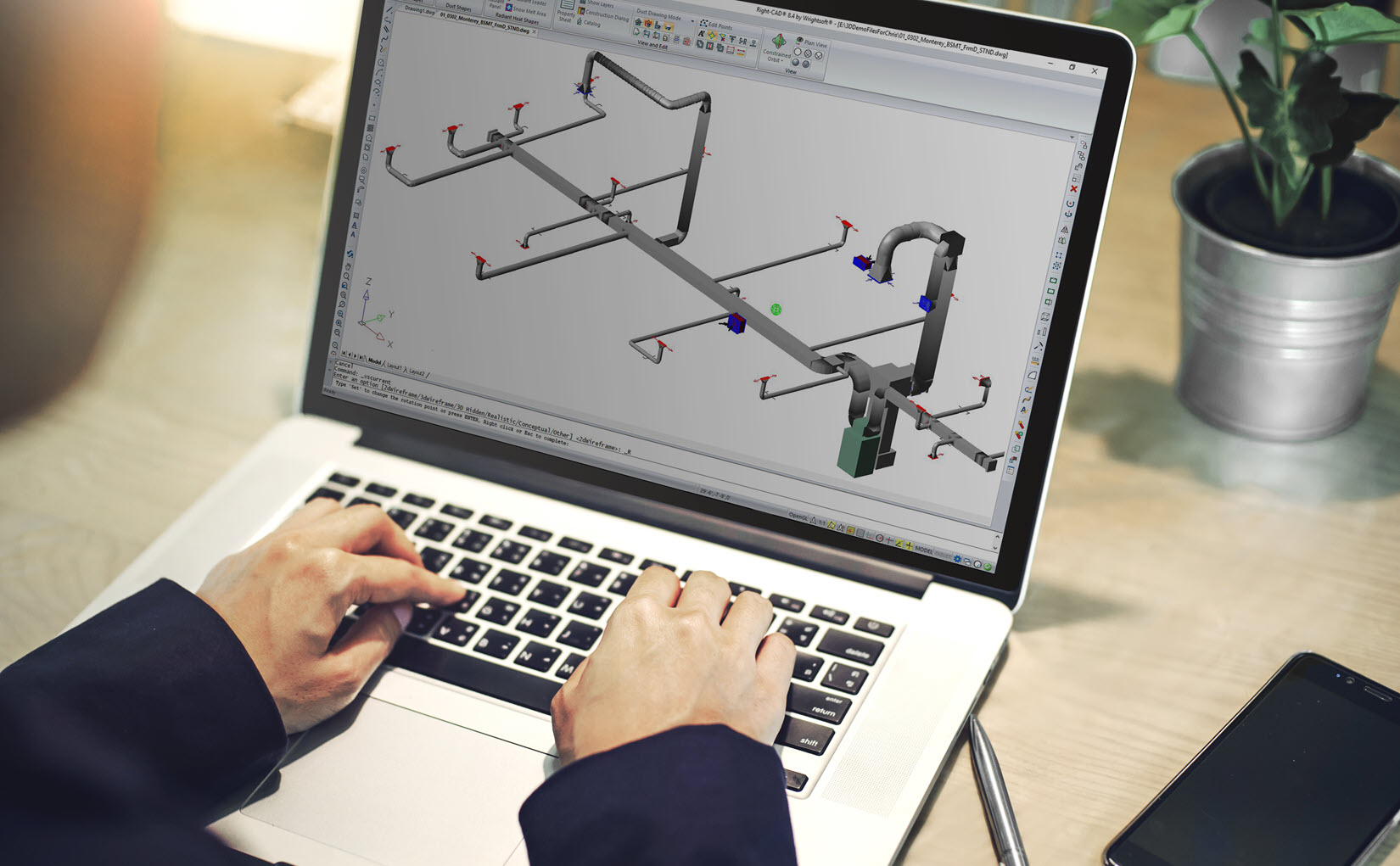
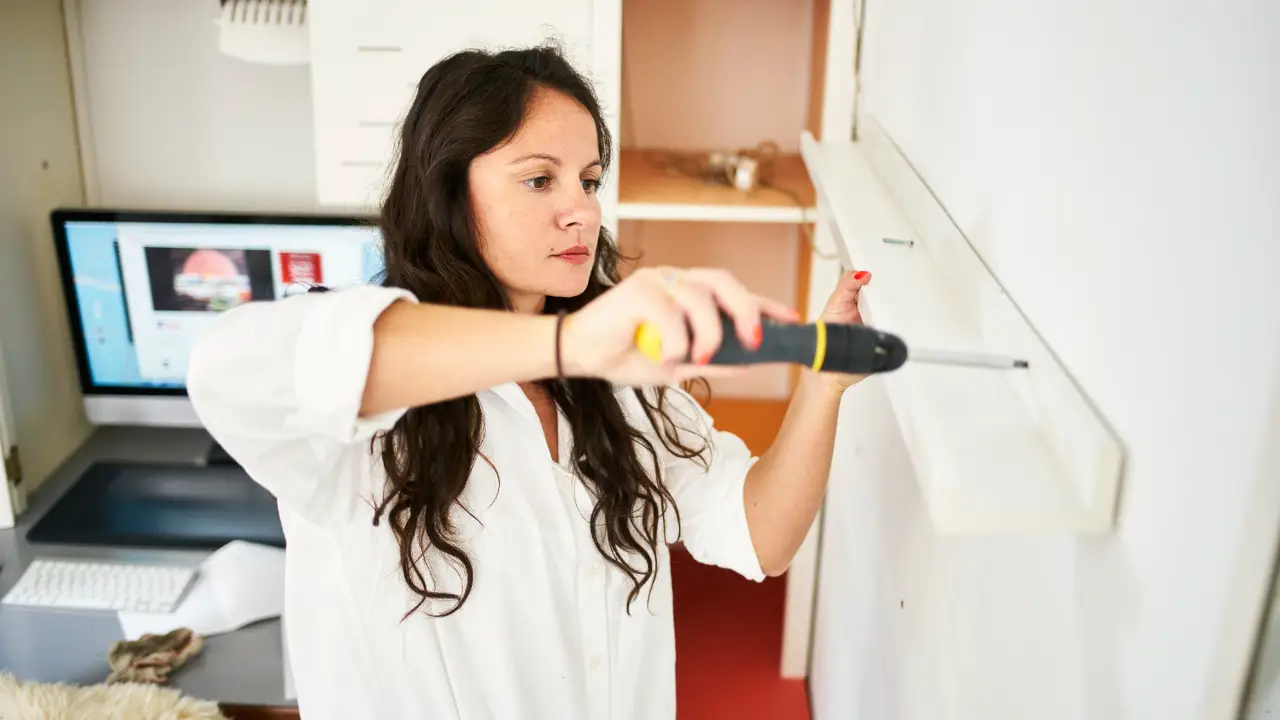

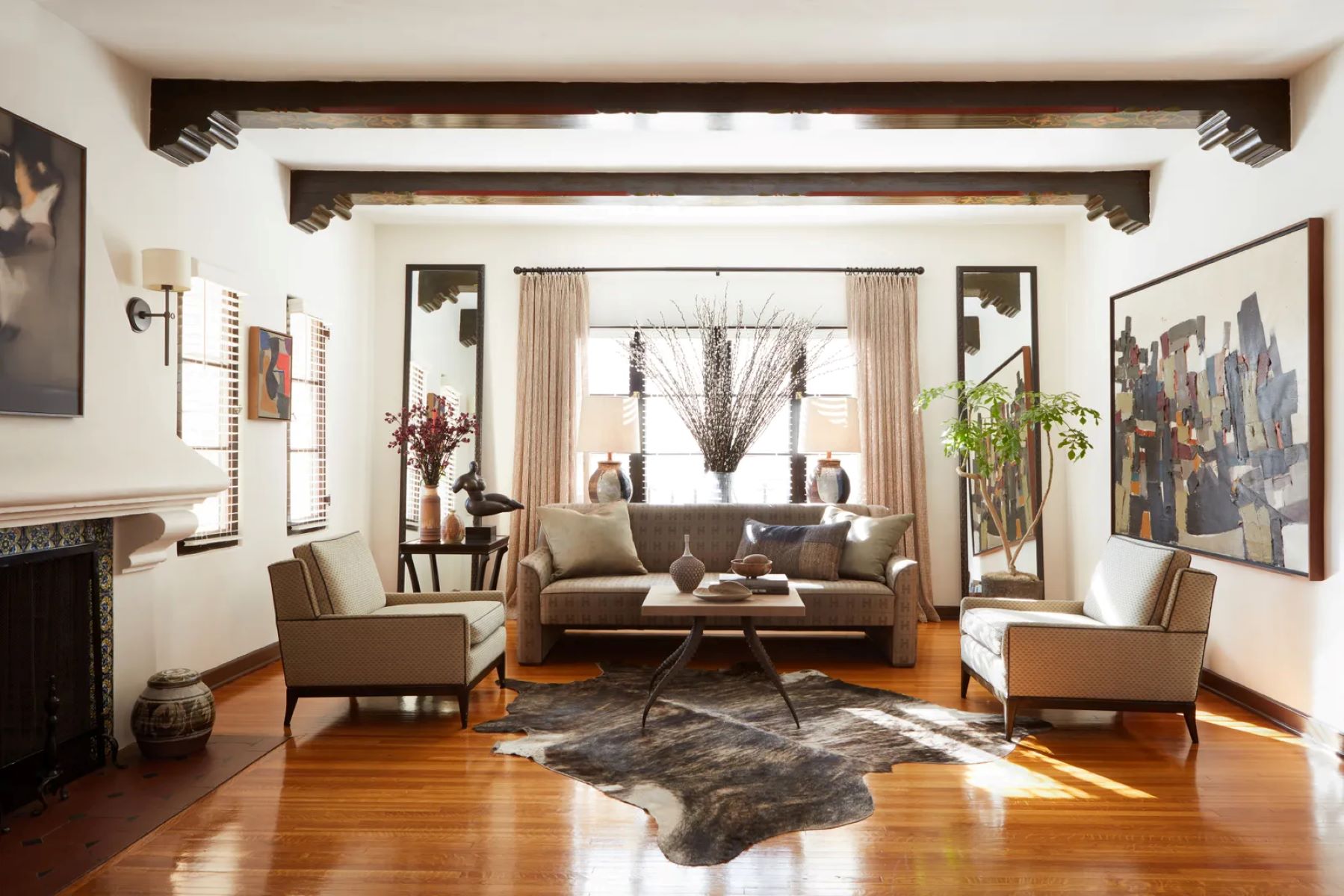
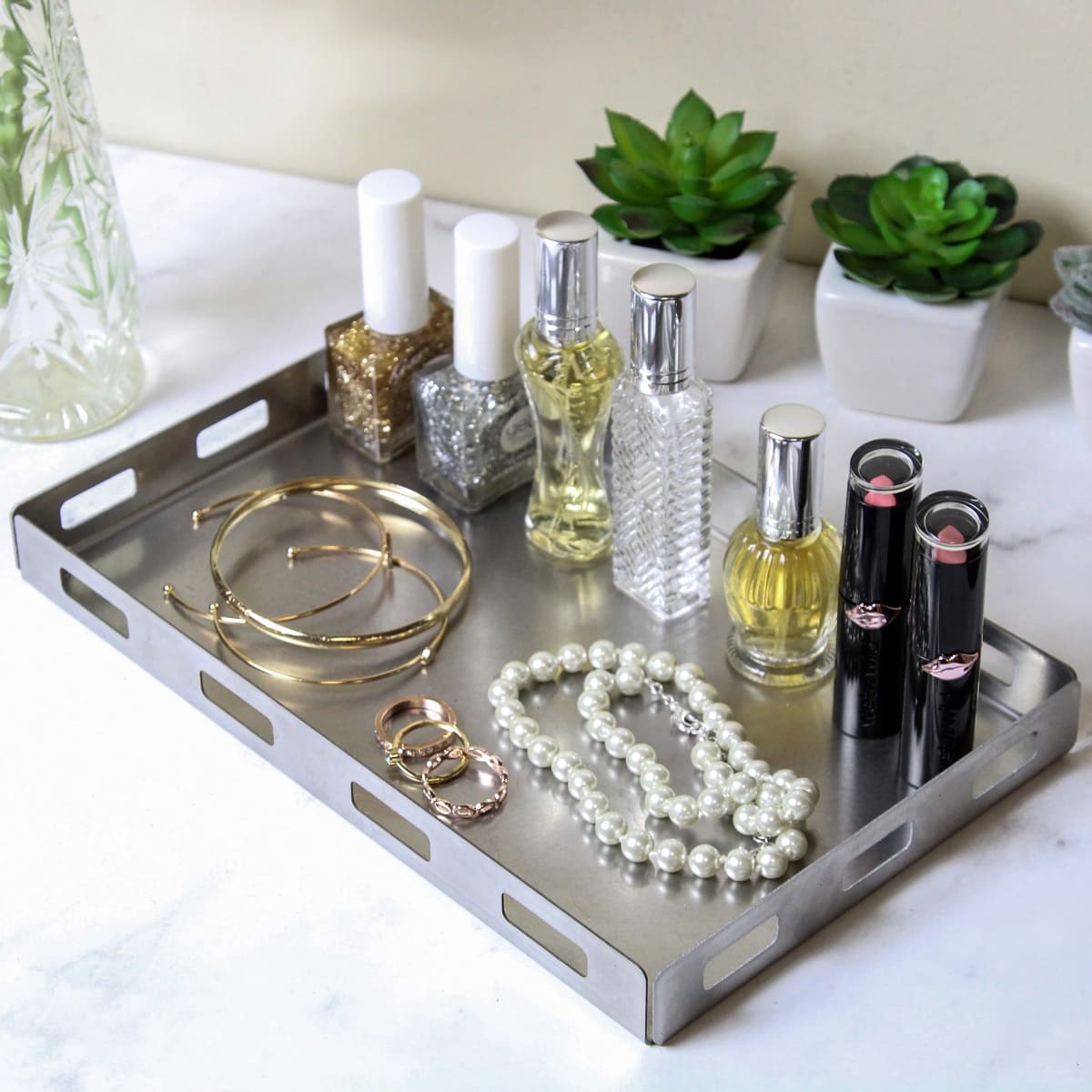
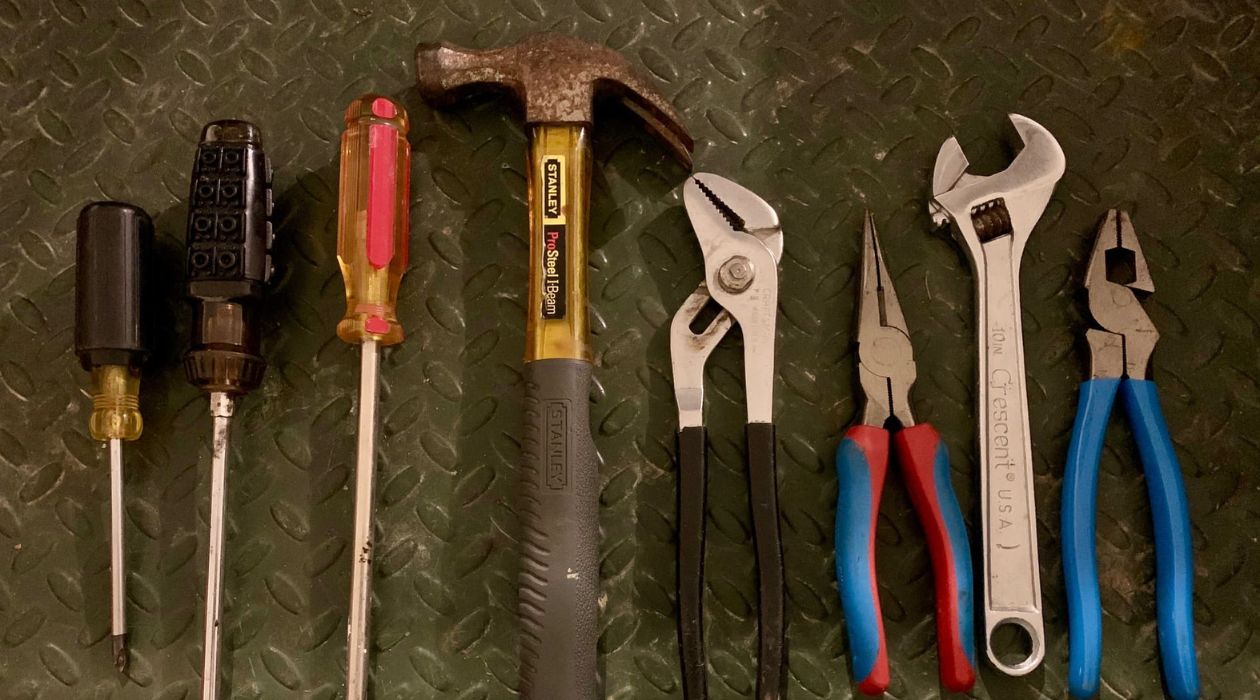

0 thoughts on “I’ve Redesigned 14 Bathrooms: These Are The Lessons Learned”